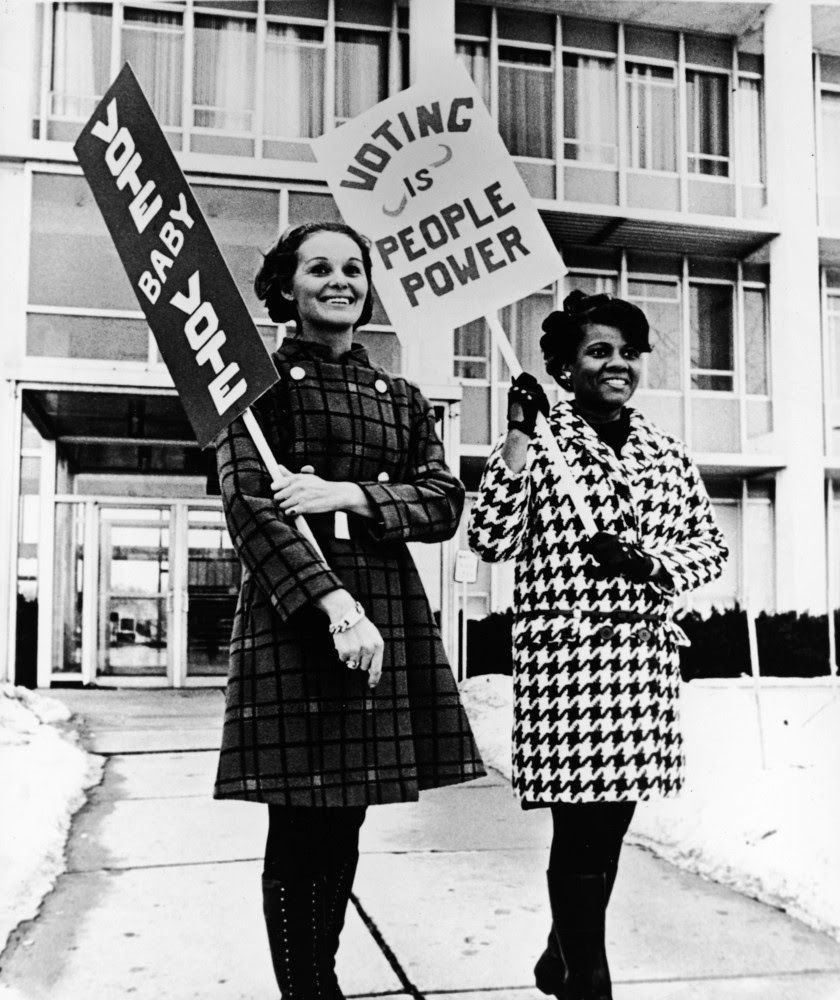From Simplicity to Complexity through Cardano
The adoption of new technologies is well described and we can observe certain patterns. There are similarities in the adoption of TCP/IP and blockchain. Let's have a look at what blockchain technology can bring us in the future and what we can expect.

What kind of technology a blockchain is?
Disruptive technology forces people to change habits, products, or processes since it is able to replace them. It has attributes that are recognizably superior to existing options and it is advantageous to make the change. Disruptive technology supersedes older technologies that are not able to compete with innovations. Start-ups are usually motivated to innovate since they need to compete with established companies that lack flexibility and lust for disruption. Innovations often target overlooked minorities or solve a problem that big companies are not interested in. In the beginning, the potential is often recognized by early adopters. As soon as the benefits of disruptive technology become evident, the companies and big players will become interested. They will fast embrace innovations and start using them in their processes or products. They will alternatively start to work on their own solution if it is possible.
We think that blockchain invention is more than disruptive technology. It is foundational technology with the potential to revolutionize the economy and social systems. Now it is more than evident that blockchain will disrupt traditional businesses and industries with faster, cheaper, more secure, and transparent solutions. But it is just the first step and the disruption will continue. By definition, foundational technologies are those that can enable progress and applications in a variety of problem domains. Blockchain definitely can transform not only the world of finance but also many industries, governance, and nations. Blockchain is a bigger invention than we could think and the impact will be enormous within a few decades.
Each technology improves over time to mature for mass adoption and usability across a variety of problem domains. Technology is gradually evolving from simplicity to complexity. This is the key to flexibility and versatility.
From simplicity to complexity
Chain of blocks, distributed networking, network consensus, and even PoW were technologies that existed before Bitcoin. The smart interconnection of these technologies has shown the world the huge potential of blockchain. Bitcoin, like almost any disruptive technology, was not very efficient in the beginning. It holds true even nowadays. Bitcoin can handle a very small number of transactions per second. Transactions are expensive and slow. Maintaining the entire network is very energy-intensive. Bitcoin does only one thing well. He can send BTC coins from Alice to Bob.
TCP/IP is also the foundational technology that was introduced in 1972. There was only one important use-case at the beginning of the internet. TCP/IP was used for sending emails among researchers on ARPAnet. Similarly to Bitcoin, there was the only single-use case that was sufficient to prove the future potential. Let’s add that sending emails was a significant improvement over existing alternatives at those times.

Two key issues need to be addressed in order for blockchain technology to be more usable. Efficiency and versatility must be increased. Both are technologically solvable problems. Let’s put efficiency aside and focus more on versatility. Let’s ask ourselves what problem blockchain solves. Blockchain allows to immutably store transactions and contracts. Both can be later audited and there is nearly no chance that somebody could change history. Blockchain is a trusted middleman between parties who do not trust each other. Blockchain is technically a kind of processor that ensures that transactions and contracts are valid and executes them. The execution is an automatic and trusted process controlled by a bunch of independent validators. The mutual consensus among validators determines the truth and everybody can take part in the decision process. The majority will decide what is truth. It is the power of the blockchain. Traditional processes and products might be replaced. The execution of transactions and contracts based on mutual agreement offers more significant advantages over traditional solutions.
We need more functionalities than just sending one kind of value from Alice to Bob. Cardano allows issuing tokens that can represent everything you might think of. These digital assets can be transferred from Alice to Bob similarly as you can send ADA coins. Any business needs to keep track of assets and properties. Records, including the whole history, are often important in the planning process and they are checked by auditors. It is essential that the information is complete, accurate, and true. The records contain both internal and external information. The privacy requirements may vary depending on who has the right to see the information. A common problem is that information is scattered between many databases in different departments of the company. Sometimes it can be difficult to put all the information together in time. It might be an error-prone process requiring a big effort. A company that makes full use of the blockchain will have an accurate overview of all assets at all times. This includes the movement of assets between business partners.
Let’s have a look at another example. A traditional stock transaction can be executed within seconds. However, the settlement can take a week or so. Even if you buy stocks in the exchange, it takes a long time until you will become the real owner of stocks. The reason is obvious. Traditional services use different technological solutions. It is needed to distribute information among many databases with different verification mechanisms often requiring human intervention. Fast value transfer between users is a perfect use case for blockchain. All verification processes can be automated through smart contracts. Buying shares can take a few seconds in the near future and you will be the real and sole owner immediately.
Smart contracts can play an important role in the exchange of assets between users. Everything can take place in a completely decentralized and automated way. This includes all the necessary verifications and the connection of all secondary processes. You can buy a share and pay tax immediately. Smart contracts will allow institutions to work with debt so that complex financial products can be created. Smart contracts will enable property insurance or build services for retirement savings. With decentralized voting, we will be able to disrupt the existing system of corporate or state governance. Decision power will stay in the hands of all interested people. Not only with the hand of elected leaders.
Cardano can lead the way from simplicity to complexity. Similarly, like TCP/IP created many new business opportunities thanks to lowering the cost of information transfer, Cardano allows the fast and cheap transfer of value including immutable storage of information about owners of these values. In addition, Cardano will make it possible to define processes and supervise their implementation. Collective voting of stakeholders can enter the processes and influence the direction of further development. Everything is transparent, trustworthy, and unchangeable. Our society is going to see a radical shift from centralization towards decentralization.
See what the Internet built on TCP/IP allows us today. In addition to sending emails, we can make phone calls and hold video conferences. We can stream video or spend time on social networks. The Internet has completely changed the way we work with information. See how all sectors have been disrupted in the last few decades. Email replaced sending paper letters. Instead of arranging a personal meeting, we can make a call. We use Google to search for information. We can graduate from university remotely through online courses. We work with money through internet banking and payment cards. And we could go on for a long time.
Blockchain uses the TCP/IP infrastructure and is a continuation of the digitization trend. Working with trust and the right to privacy will be fundamentally changed. Blockchain is a technology that is based on the concept of decentralization. This is not just about disrupting traditional processes through greater efficiency. It is also about more freedom, the right to control the processes, more opportunities to intervene in the processes, and also making collective decisions about public affairs. That’s why blockchain is a foundational technology.
What is ahead of us
We have already overcome the stage where blockchain was focused on only a simple single use-case that is Bitcoin as an alternative payment method circumventing the current financial system’s limitations. Despite early-adopters know the technology quite well, blockchain is still a very novel and complex technology for companies and banks. Yet many of them have successfully tested it and are happy with the results. Institutions issue tokens, try to deploy smart contracts and even seek solutions to deal with privacy themselves. The technology is used only to a limited extent. Applications are usually very simple and straightforward to eliminate the risk of using new technology. Everything must be controlled and supervised by developers. This now happens mainly on the local level, ie with the private version of the blockchain. Institutions try to offer their solution to partners. The advantages and disadvantages of the used technology are monitored and the operating costs and possible advantages of further development and deployment are calculated.

Hopefully, we will soon overcome this stage. Similar to the beginning of many TCP/IP-based private networks, the blockchain’s power will only excel at the global level. Using a private version of the blockchain creates an information silo. Networks can be connected, but it is certainly more advantageous for everyone to have all the information in one place. Many local experiments will have to be done to find the limits of usability. Over time, the demands on global interoperability will arise. It will be also required to process more complex tasks and activities. Once many companies have tried blockchain technology locally, more thought will be given to a coordinated transition to a single network. At the moment, it does not matter whether it will be a single network or multiple networks such as Cardano that will be interconnected to provide a global experience. The more people, businesses, banks, and institutions are interconnected, the better. This phase can be compared to the creation of the first public websites when all people around the world could see the same web-page and could have the same information for free. From that point, you know the story. Many new services have emerged that are used nowadays by most people in the world.
In the case of blockchain, the most interesting phase will occur at the moment when blockchain will be considered as mastered and well-described technology. Once people, businesses, industries, and states understand the blockchain and use it every day then it will become a financial, social, and political standard. The whole society will begin to transform dramatically. At this stage, blockchain technology will look different than today. The basic concepts and principles will be the same. However, there will be many other supportive technologies around it. Blockchain will be more connected to the physical world. User-friendliness will be much higher and people won’t even know what technology they’re using. They will only benefit from using blockchain technologies and they will naturally expect that all institutions around them use it as well.
Conclusion
The first generation of blockchain cannot compete with the incoming generation in terms of technology. This is hindered mainly by technological backwardness, inefficiency, and the slow absorption of innovations. The first generation is better off with adoption from the group of early-adopters. However, the overall adoption rate is so low that it does not yet play a significant role in the context of real use and we can neglect it. Technology must mature for mass adoption. The reverse is not true. People will not adopt imperfect technology. Cardano still has plenty of time to achieve mass success. We do not expect that the first generation of blockchain could absorb functionalities that have been already tested and are highly demanded by businesses, banks, and people.
We do not mean that the first generation of cryptocurrencies has no chance of adoption. A wide infrastructure is built around Bitcoin. However, the difference is in the number of possible usages and the level of versatility. While Bitcoin is used as an investment instrument and some people believe in the possibility that it can become a store of value, businesses and banks are trying to use blockchain technology for completely different purposes. At the moment, it happens locally and with a private version of the blockchain. This will soon change and everybody will want to use the public networks at the global level. Here Cardano has a better chance of success and it is independent of Bitcoin’s destiny.
Blockchain technology is still in its infancy. We are in a phase where it is tested not only by early-adopters and people but also by institutions and IT giants. Everyone knows the benefits. However, technological immaturity is preventing a greater expansion. With the advent of third-generation networks, this will change. Cardano can be a leader in issuing new tokens, deploying a smart contract, having private transactions, resolved scalability, etc. Mass global adoption is a task for several decades. However, what is emerging now is the basis of our decentralized future. The IOHK team was at the beginning of this revolution, and Cardano is a network that will continue to evolve so that the necessary transformation changes can take place.